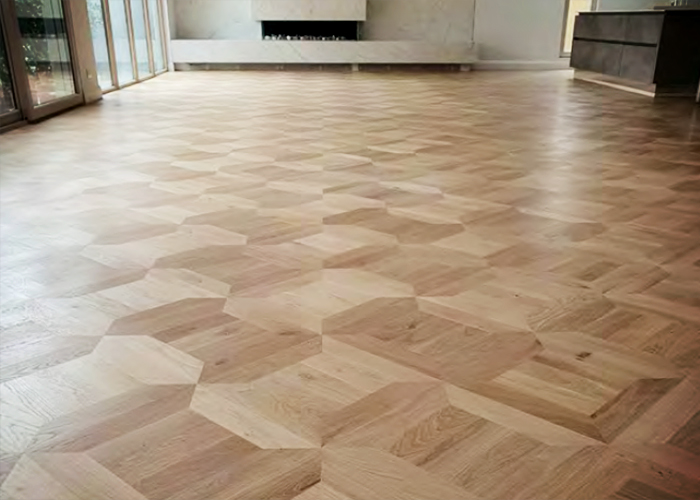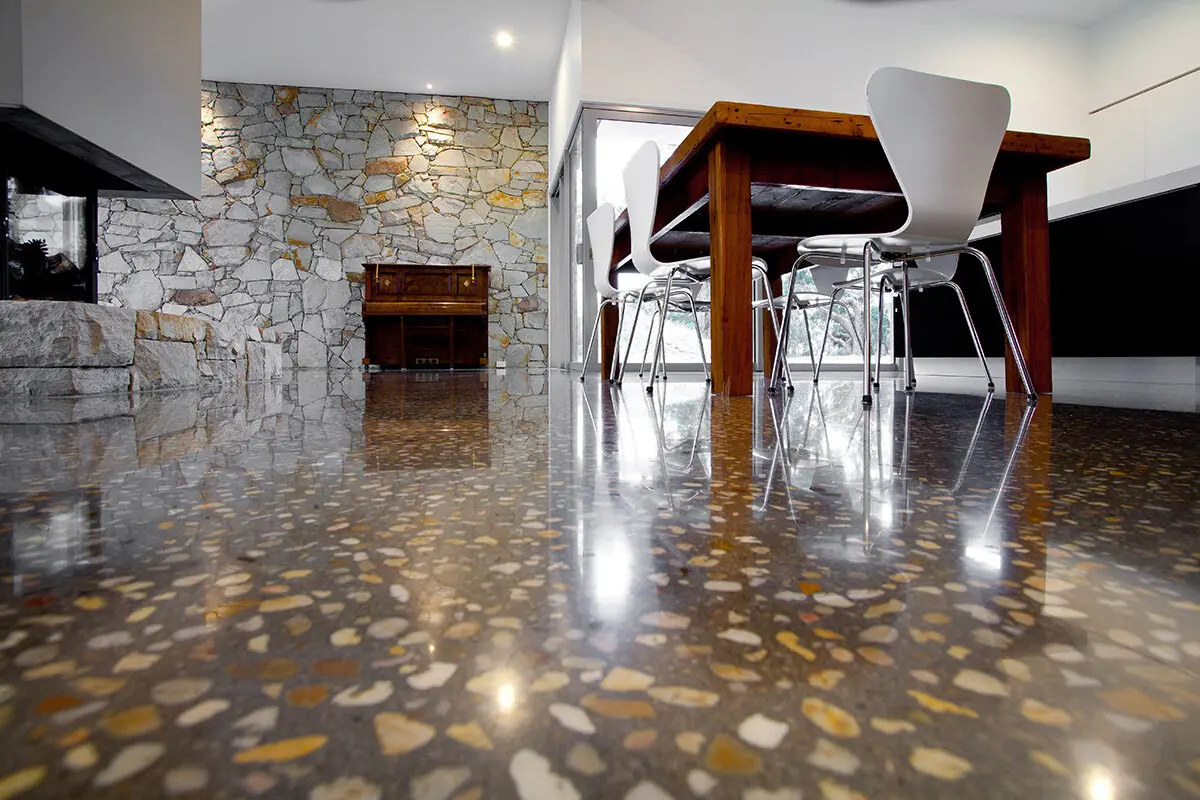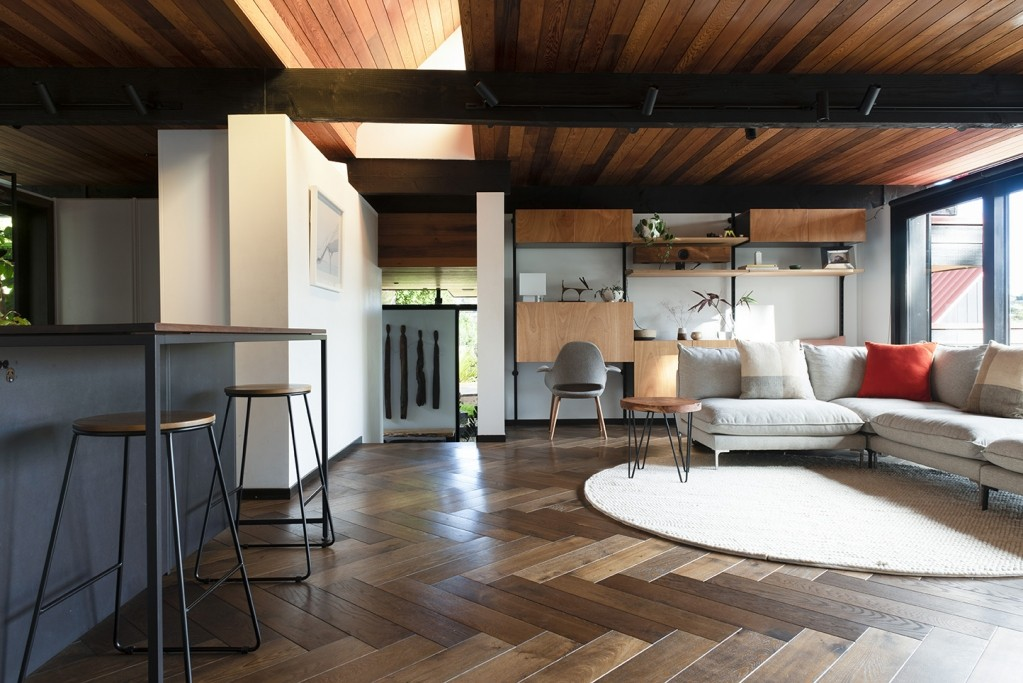Table of Contents
Shifts in architectural designs, the availability of materials, and cultural preferences have led to major transformations in flooring trends over several centuries.
The intricate patterns of parquet and the timeless elegance of terrazzo are just two examples of the ancient flooring trends that continue to inspire contemporary design while also providing a fascinating insight into the past.
We are going to go into the rich history of these two classic flooring patterns in this post, analyzing their origins, qualities, and the continuing appeal that they have held throughout the years.
1. Parquet: A Timeless Classic
The origins of parquet flooring may be traced back to France in the 16th century, when it was gaining popularity among the elite because of its beautiful designs and sumptuous appearance.
Parquet flooring, which is characterized by the arrangement of relatively small pieces of wood in geometric patterns, has become synonymous with wealth and sophistication.
Throughout the course of history, a variety of styles have arisen, such as herringbone, chevron, and basket weave, each of which exemplifies detailed craftsmanship and meticulous attention to detail. – Ben Flynn, Manager at Homefield IT
2. The Renaissance of Parquet Flooring

Although there were periods of decrease in the use of parquet flooring, it saw a comeback in popularity throughout the latter half of the 19th century and the early 20th century, particularly during the Art Deco movement.
Interior designers adopted parquet flooring due to its capacity to impart a sense of texture and visual appeal to spaces. Interior designers accomplished this by combining unusual species of wood and experimenting with novel designs.
For homeowners who are looking to imbue their interiors with timeless elegance and old-world charm, parquet continues to be a popular choice in today’s market. – Arman Minas, Director at Armstone
3. Terrazzo: Beauty in Diversity
“The history of terrazzo flooring goes back thousands of years, with its roots traced back to ancient Egypt. Venetian artists during the Renaissance period were the ones who brought the material to widespread popularity.
Historically, people highly appreciated terrazzo floors for their longevity and adaptability. Traditionally, artisans crafted these floors by placing marble fragments in a cement or resin matrix framework.
The capacity of terrazzo to integrate a broad variety of materials, such as glass, granite, and even recycled aggregates, results in a kaleidoscope of colors and textures. This is what sets terrazzo apart from other flooring options.” – Sasha Quail, Business Development Manager of claims.co.uk
4. The Modern Revival of Terrazzo

Terrazzo has been experiencing a rebirth in interior design in recent years, with architects and designers embracing its nostalgic appeal and eco-friendly properties. Many interior design projects have utilized terrazzo.
Besides its conventional use in flooring, people have also incorporated terrazzo into countertops, furniture, and decorative accessories, adding a touch of classic elegance to homes and other contemporary spaces.
Because of its smooth finish and low maintenance requirements, it is an excellent option for home improvement projects as well as commercial construction projects. – Timothy Allen, Director at Oberheiden P.C.
5. Sustainable Flooring Choices: Parquet vs. Terrazzo
Homeowners who are concerned about the environment have the option of selecting either parquet or terrazzo flooring, both of which are environmentally beneficial. Solid wood or engineered wood products, derived from responsibly maintained forests, form the basis of parquet flooring.
Terrazzo flooring, on the other hand, allows for the use of recycled materials, which helps to reduce waste and minimize the impact on the environment.
A number of criteria, including aesthetic preferences, financial constraints, and maintenance considerations, ultimately determine the decision between the two. – Holly Cooper Marketing Manager at Windows & Doors UK
6. Embracing Tradition in Modern Design
With the future of flooring trends in mind, it is abundantly evident that the appeal of parquet and terrazzo will continue to persist for a considerable amount of time.
These renowned flooring designs, whether used to evoke antiquity in heritage houses or to add character to contemporary spaces, offer countless opportunities for creative expression.
We are able to create rooms that are not only beautiful but also deeply steeped in history if we pay homage to the skill and heritage that lie behind parquet and terrazzo. – Cindi Keller, Head of Communications at THE CRIMINAL DEFENSE FIRM
Conclusion
These historic flooring ideas continue to fascinate our imagination and inspire modern design. From the intricate patterns of parquet to the eternal beauty of terrazzo, these themes continue to inspire modern design.
By introducing these timeless materials into your home, you can elevate your space and create an image that will last a lifetime. These materials can help you achieve the classic elegance of parquet or the eclectic charm of terrazzo, depending on your preference.
While we are commemorating the long and illustrious history of parquet and terrazzo, let us endeavor to maintain our commitment to tradition while also exploring new avenues of possibility in the realm of flooring design.





